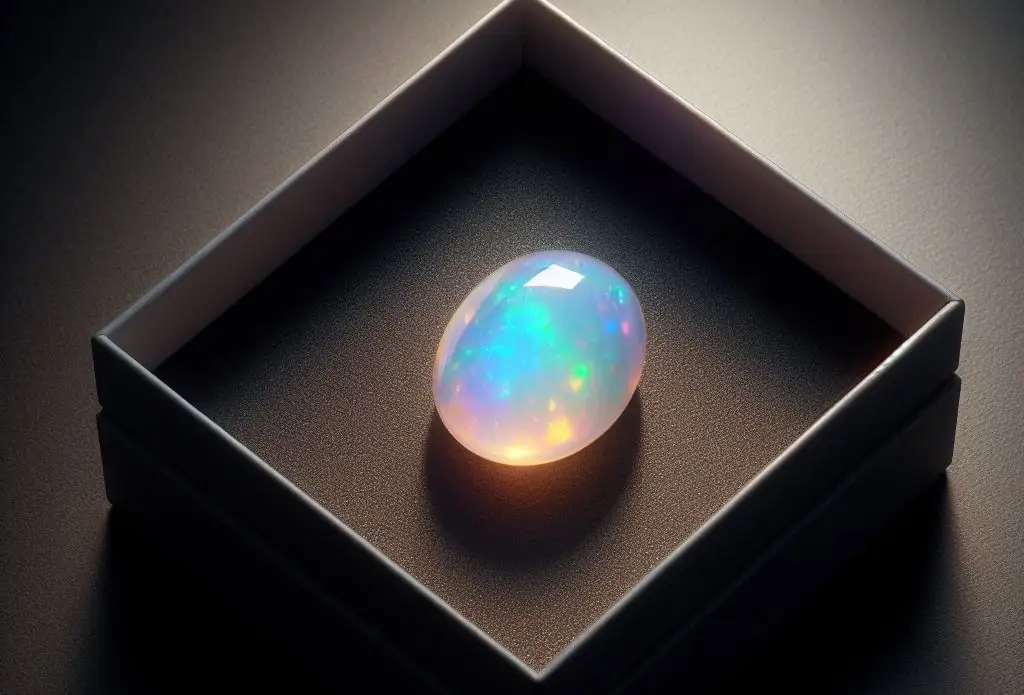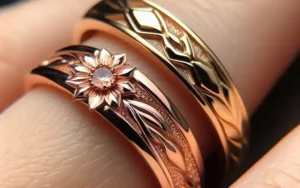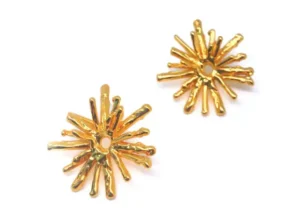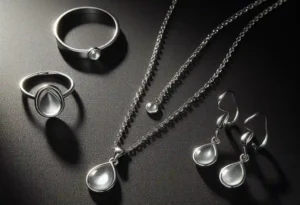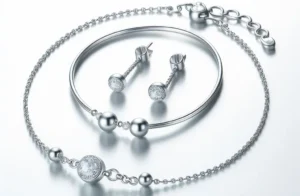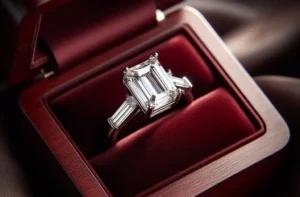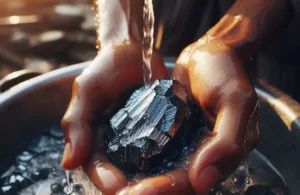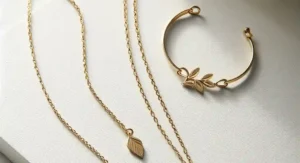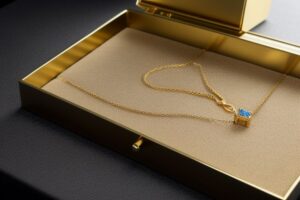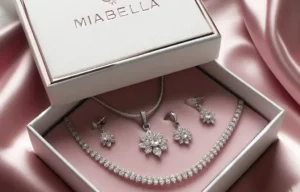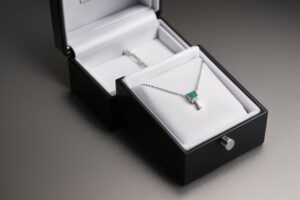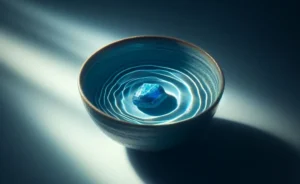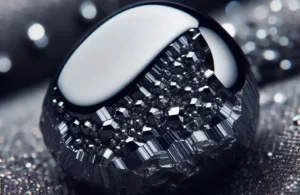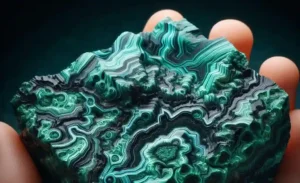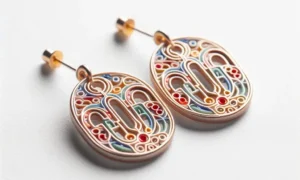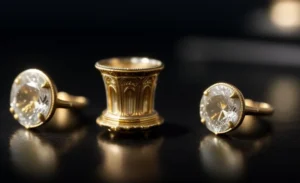How to Determine If Opal is Genuine or Fake? Opals are mesmerizing gemstones that have been cherished for centuries for their unique and iridescent beauty. But with the rise in popularity of opals, there has also been an increase in the production of fake opals.
These imitations can be difficult to spot, leaving many buyers wondering if their opal is the real thing or just a convincing fake.
In this blog post, we will explore the key characteristics of genuine opals and share tips on how to tell if your opal is real or fake.
How To Tell If An Opal Is Real?
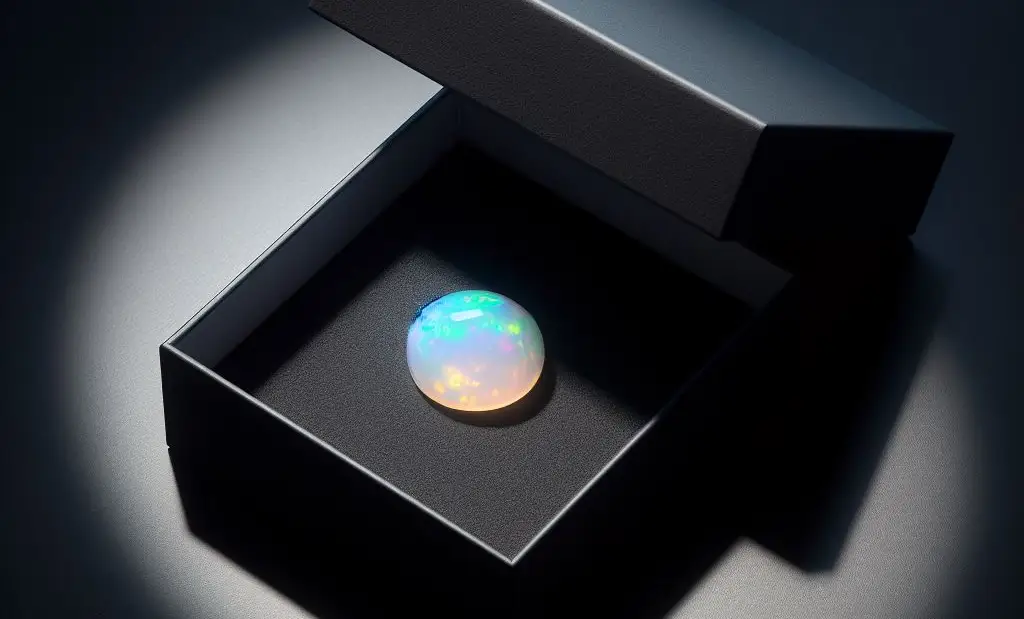
– Conduct a thorough visual inspection under good lighting to check for the opal’s characteristic play-of-color and unique, non-repetitive pattern. Genuine opals display a vivid, shifting spectrum of colors and natural patterns.
– Test the opal’s body temperature. Real opals should feel cool to the touch initially due to their water content and take some time to adjust to your body temperature.
– Perform the light and water tests. Genuine opals will maintain their dazzling color play under different lighting conditions and remain unchanged when submerged in water.
– Look for signs of artificiality that may indicate a fake, such as too perfect symmetry in pattern, lack of depth in color, or visible layers indicating a composite stone like doublets or triplets.
– Be aware of the types of fakes, including plastic imitations, glass or resin fakes, and composite stones. Each has distinct tells, such as unnatural feel, visible glue lines, or lack of depth in color.
– Consider the thermal response, where genuine opals gradually adapt to body temperature, unlike synthetic ones.
– Consult a professional for a detailed analysis if uncertainty remains, leveraging their expertise and tools for an accurate assessment.
Understanding the Basics of Opals

Opals are fascinating gemstones composed of hydrated silica minerals, with water content typically between 6% and 10%. This unique composition allows for the extraordinary phenomenon known as play-of-color, where light interacts with the silica spheres inside the opal, producing dazzling flashes of color.
Opals are classified into various types, such as black, white, boulder, and fire opals, each distinguished by their base color and the conditions under which they were formed. Black opals, known for their dark body tone, are among the rarest and most sought-after, while white opals feature a lighter base, making their color play particularly vibrant.
Boulder opals are found attached to a rock matrix, giving them a unique appearance, and fire opals are celebrated for their warm base colors, ranging from yellow to red, often without the characteristic play-of-color. Each type of opal presents its own set of characteristics that contribute to its beauty and value.
The diversity in opal types underscores the importance of understanding what makes each unique, aiding in the recognition and appreciation of genuine opals. Recognizing the type of opal you encounter is crucial for proper assessment and appreciation of its authenticity and inherent beauty.
The Importance of Visual Inspection
Performing a detailed visual inspection is a fundamental step in determining an opal’s authenticity. This process involves closely observing the gemstone under adequate lighting to capture its full spectrum of characteristics. Key elements to focus on include the opal’s play-of-color and pattern uniqueness.
Authentic opals dazzle with bright, shifting colors that change with your perspective, showcasing a mesmerizing display unlike any other gemstone. This phenomenon should be vivid and apparent, distinguishing genuine opals from their counterparts.
When examining the pattern, it’s crucial to note the randomness and irregularity inherent in natural stones. Authentic opals will exhibit inherently unique patterns, without any predictable repetition. This contrasts sharply with synthetic or imitation opals, which may present uniform, repetitive patterns that betray their man-made origins.
Additionally, inspecting the surface for signs of wear, tear, or any form of artificial enhancement can provide further clues about the opal’s authenticity. Natural opals might display slight imperfections, which, rather than detracting from the gem’s value, often add to its charm and serve as evidence of its natural formation process.
This visual inspection, while requiring a keen eye, is a crucial step that leverages the opal’s visual characteristics to assess its authenticity. Through careful observation, collectors and enthusiasts can distinguish genuine opals from imitations, ensuring the value and authenticity of their gemstone.
Testing for Body Temperature
An intriguing method to gauge the authenticity of an opal involves assessing its thermal properties, specifically how it responds to changes in temperature when held. Genuine opals possess a notable characteristic stemming from their composition; they contain a significant amount of water, typically ranging from 6% to 10%.
This unique feature means that when you first pick up a real opal, it should feel noticeably cool to the touch. This coolness is a direct result of the stone’s water content, which allows it to absorb and retain heat differently than its surroundings.
After holding the opal in your palm for a minute or two, observe how it reacts. A natural opal will demonstrate a gradual adjustment to your body temperature, taking a discernible amount of time to warm up. This slow transition is not as pronounced in synthetic opals, which tend to reach body temperature more swiftly due to the absence of natural water content.
The thermal test is a simple yet effective technique that leverages the inherent physical properties of opals to help differentiate genuine specimens from their artificial counterparts. It is a non-invasive method that anyone can perform with just their hands and a bit of patience, providing valuable insight into the nature of the stone being examined.
The Light and Water Tests
Two effective methods for assessing an opal’s authenticity involve testing its response to light and water. The light test capitalizes on a genuine opal’s inherent ability to display a vibrant play-of-color under varied lighting conditions.
By examining the stone under both natural sunlight and artificial indoor lighting, observers can detect the signature dynamic color shifts that characterize real opals. Synthetic or treated stones may either lack this vibrancy or exhibit inconsistent color plays across different lighting environments, signaling a potential forgery.
Conducting the water test requires submerging the opal in water for a short duration. This test relies on the stable nature of genuine opals, which should maintain their color and pattern even when wet.
In contrast, certain imitation opals may exhibit noticeable changes when submerged, such as a loss of color or an alteration in appearance. These reactions can serve as indicators of non-authenticity, aiding in the distinction between real and counterfeit opals.
These tests, while simple, offer valuable insights into an opal’s authenticity. They leverage the unique physical properties of genuine opals, providing collectors and enthusiasts with practical tools for preliminary evaluation. However, these methods should be employed as part of a broader assessment strategy, considering the nuanced nature of opal authenticity.
Identifying Specific Types of Fakes
Navigating the landscape of opal authenticity necessitates an awareness of the various forms of imitations prevalent in the market. Among these, plastic replicas stand out for their lack of natural characteristics and should be relatively easy to spot due to their artificial appearance and feel.
More sophisticated fakes, such as doublets and triplets, present a greater challenge. These composite stones involve a genuine opal layer, but it’s either glued to a dark backing (in the case of doublets) or topped with a clear, synthetic cap (for triplets), altering its appearance and value. A keen eye might notice the layers or a distinct glue line when viewing the side of the stone or examining it under magnification.
Additionally, there are solid imitations crafted from materials like glass or resin, designed to mimic opal’s play-of-color. These can sometimes trick an untrained eye but lack the depth and unique color patterns of natural opals.
By understanding these common types of fakes and employing diligent inspection techniques, enthusiasts can better protect themselves against inadvertently acquiring counterfeit opals. It’s also beneficial to recognize that genuine opals have a natural warmth and depth that is difficult to replicate, providing another clue for discerning collectors.
Seeking Professional Verification
In situations where the authenticity of an opal remains uncertain after personal inspection and testing, consulting with a gemologist becomes a critical next step. Specialists in the field, these professionals possess both the sophisticated tools and the depth of knowledge required to conduct a thorough evaluation of the gemstone.
Techniques such as spectroscopy, microscopic examination, and refractive testing are among the methods employed to discern the genuine from the counterfeit with precision. This level of analysis can unveil details about the opal’s composition, structure, and origin, which are not observable through basic inspection methods alone.
While there may be costs associated with this service, the value it provides in confirming the authenticity of potentially significant investments cannot be overstated.
Engaging a qualified gemologist not only ensures the verification of the opal’s realness but also contributes to the overall understanding and appreciation of the gemstone’s unique properties and provenance.
This step is especially recommended for items of considerable value or those that are intended to be a part of a collection or an investment. Through professional verification, enthusiasts and collectors can secure not only the authenticity but also the enduring value of their opal gemstones.
Understanding the Market and Pricing
Navigating the opal market requires a keen understanding of how quality, rarity, and type influence pricing. Genuine opals, particularly those varieties that are less commonly found, such as black opals, can fetch premium prices.
Their value is determined by several factors including color vibrancy, pattern uniqueness, and overall clarity, which are indicative of their natural origin and rarity.
A crucial aspect to consider is that market prices for opals are not static; they fluctuate based on demand, the discovery of new opal sources, and changes in fashion trends. Therefore, staying informed about current market conditions and pricing trends is essential for anyone looking to purchase an opal.
Buyers should approach deals with a critical eye—exceptionally low prices may signal that the opal is not genuine. While there can be legitimate reasons for lower prices, such as the seller’s lack of knowledge or the need for a quick sale, often, a price that seems too good to be true is a red flag for counterfeit stones.
Educating yourself about the typical price range for different types of opals, considering their quality and rarity, can help you avoid falling prey to such pitfalls. Additionally, understanding the pricing dynamics of the opal market can empower you to make more informed decisions, ensuring that you pay a fair price for the quality of the gemstone you are acquiring.
The Importance of Purchase Documentation
Securing documentation upon acquiring an opal is more than just a formality; it’s a critical step in validating your investment. Legitimate sellers are typically prepared to provide a certificate of authenticity or a detailed valuation certificate.
These documents are invaluable as they outline the gemstone’s essential attributes and confirm its authenticity through an authoritative source. The documentation serves multiple purposes; it not only reassures you at the time of purchase but also significantly enhances the gemstone’s resale value.
Should you choose to part with your opal in the future, having the original authenticity documentation can make the process smoother and more profitable. This documentation acts as a passport for your opal, detailing its journey and proving its legitimacy to future buyers or appraisers.
It is an indispensable tool in the gemstone market, where proof of authenticity directly influences the item’s desirability and market value. Hence, insisting on proper purchase documentation is not just prudent—it’s essential for anyone serious about their opal collection’s integrity and value.

